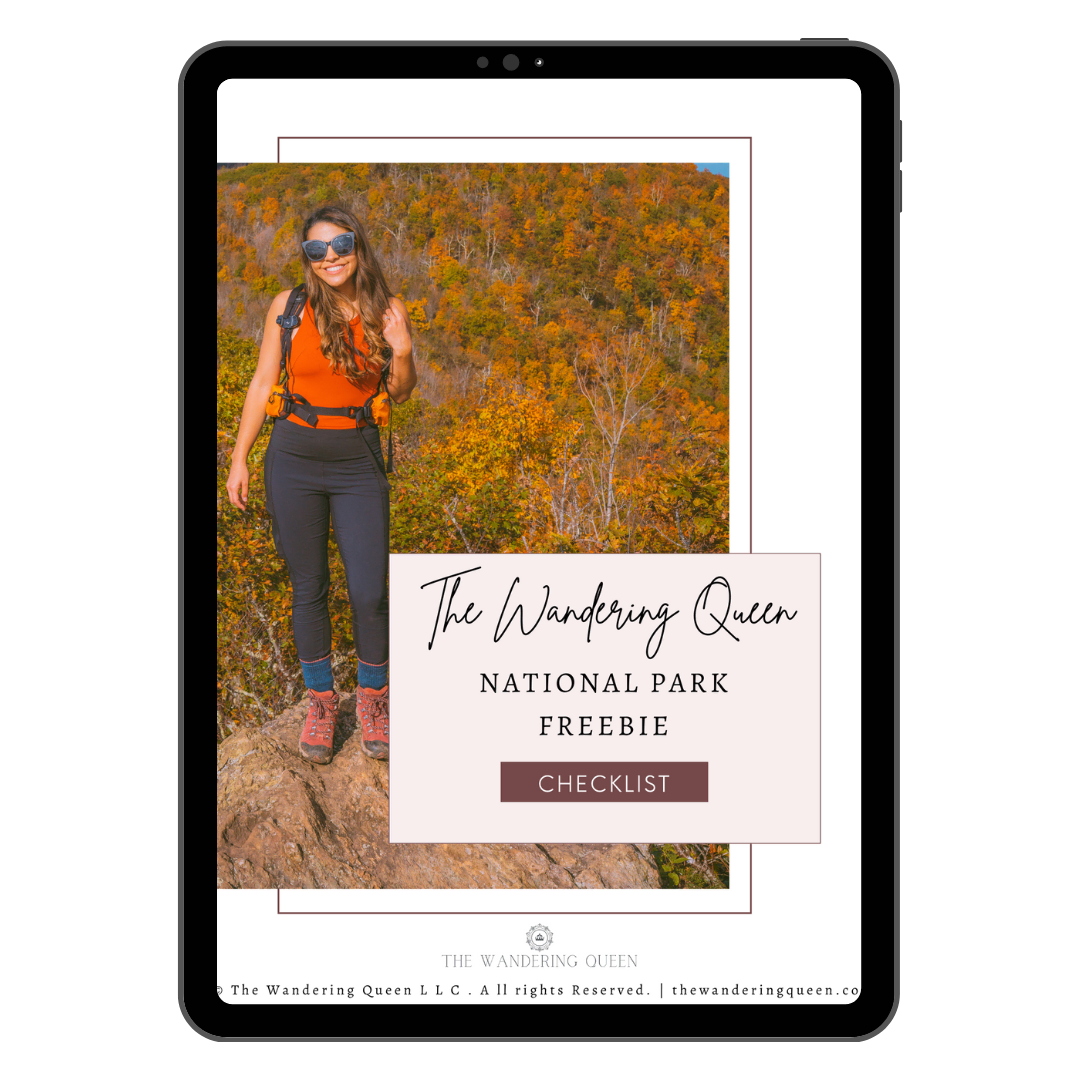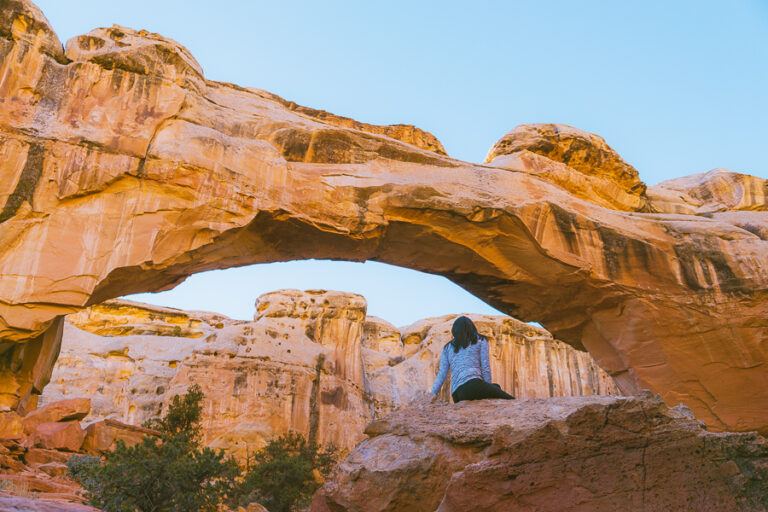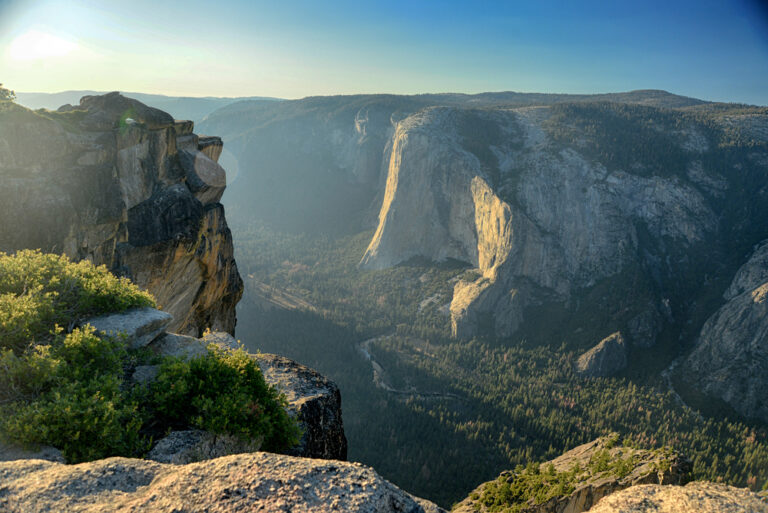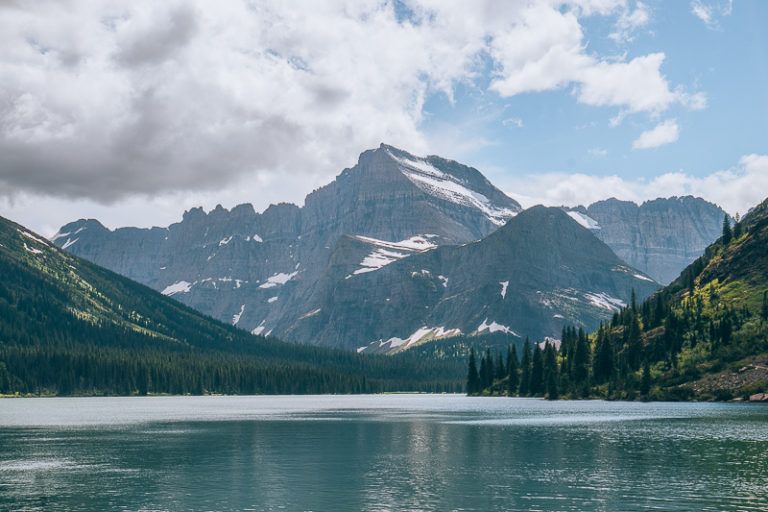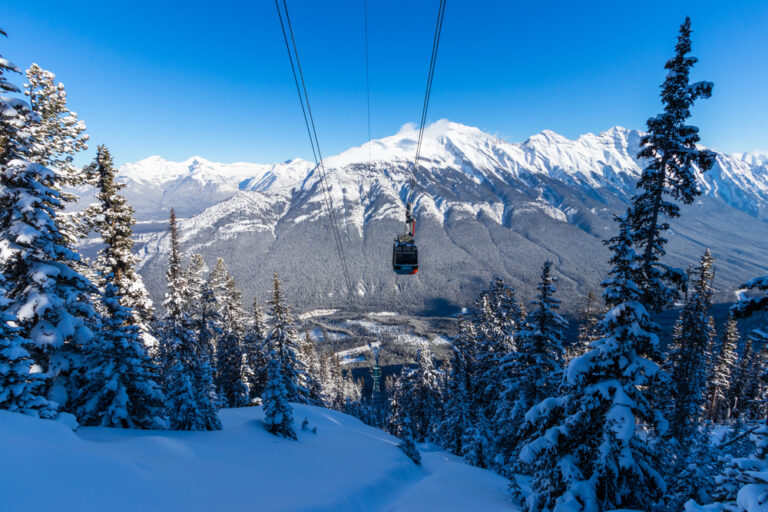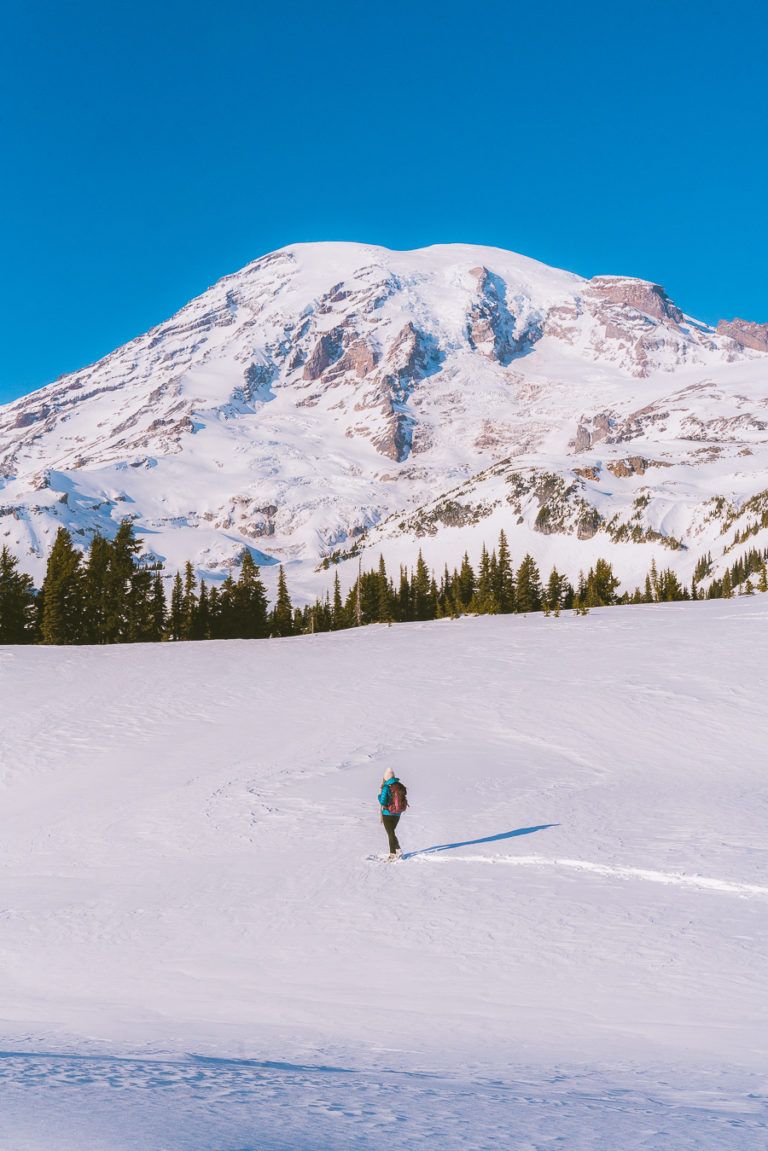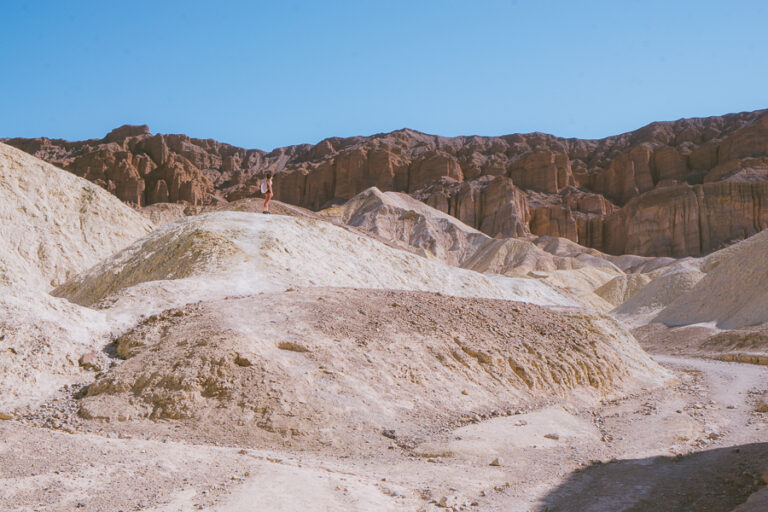Great Smoky Mountains Itinerary | The Perfect 3-Day Trip
The Great Smoky Mountain range sits along the border of North Carolina and Tennessee. If you’re planning a trip here, you’ll be impressed by the stunning waterfalls, roaring landscapes, and diverse wildlife. There’s nothing quite as special as a Smoky Mountains trip.
So, let’s take a look at the absolute best way to spend three days in the Great Smoky Mountains. Whether trekking through the great wilderness, viewing stunning waterfalls, or grabbing a bite at local eateries, these three days will have plenty to keep you busy.
What are you waiting for? It’s time to dive in and explore the need-to-knows about the perfect Great Smoky Mountains Itinerary.

Disclosure: This post contains affiliate links. If you click one of them, I may receive a small commission (for which I am very grateful for) at no extra cost to you.
Great Smoky Mountains National Park
Related Posts
How to Get to the Great Smoky Mountains

The Great Smoky Mountains National Park has two main entrances: the Sugarlands Visitor Center entrance from Tennessee and the Oconaluftee Visitor Center entrance from the North Carolina side. So, how you get there will depend on which state or side you’re traveling from.
You can drive directly from nearby cities, like Gatlinburg, Waynesville, or Townsend, or try long road trips from wherever you’re traveling. But the easiest way to get to either entrance is to fly directly to the closest airport and drive from there.
The closest to the Sugarlands Visitor Center is Knoxville’s McGhee Tyson Airport, about an hour and a bit from the entrance near Gatlinburg. You can drive from Knoxville along US 441 to the park.
The closest airport to the Oconaluftee Visitor Center near Cherokee is Asheville Regional Airport (AVL), just over a 50-minute drive away from the entrance on US 441.
There is also the Nashville International Airport, which is 3 hours and 188 miles away.
Read Next: Apart from the Great Smoky Mountains National Park, here are some of the other best national parks on the East Coast to check out.
Map Of Great Smoky Mountains Itinerary
Best Time to Visit the Great Smoky Mountains
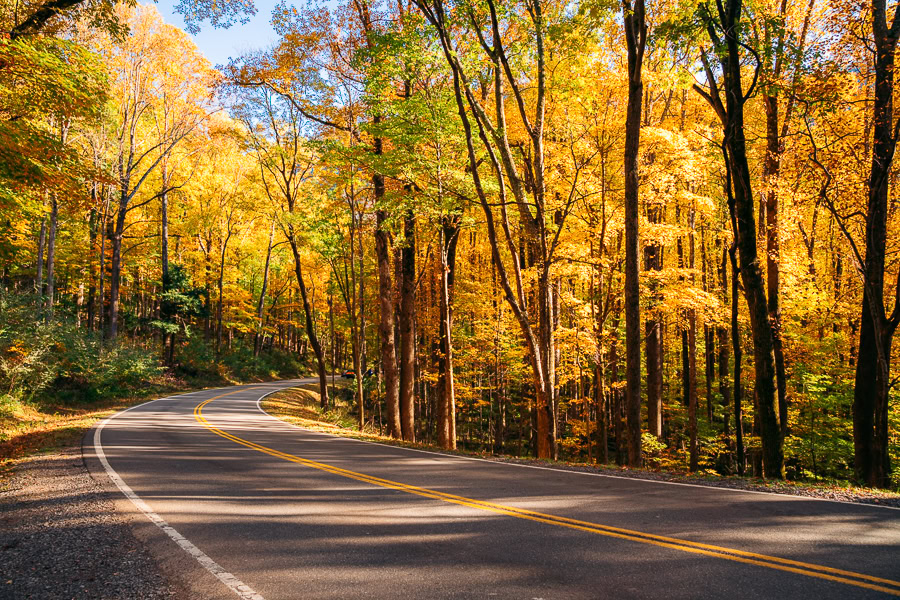
Generally, the best time to visit is June through August (summer); the weather is warm and sunny, the wildlife is out and about, and the waterfalls are flowing. Summer is also the peak season, so you can expect more people to visit during this time, and prices will also be slightly higher.
Each season has pros and cons depending on what you want from your trip, so here is a more in-depth look at each so you can make a more informed decision on when to go.
Summer in the Great Smoky Mountains
June — August
As mentioned above, summertime in the Great Smoky Mountains is the most popular time for visitors. The weather is nice and warm, with average daily highs of 77°F (25°C) or 78.8°F (26°C). Summer is perfect for outdoor activities, like hiking, whitewater rafting, horseback riding, or just enjoying the scenery.
Fall in the Great Smoky Mountains
September — November
Fall is a wonderful time to visit if you like slightly cooler temperatures paired with fall foliage’s stunning orange and yellow hues. Temperatures range between 55.4°F (13°C) to 73.4°F (23°C) during the day. This is arguably the best time to go hiking, as it isn’t too hot, and the views and bright scenery are stunning beyond belief.
Winter in the Great Smoky Mountains
December — February
From early November onwards, the temperatures start to dip, bringing a pleasant time for chilly weather lovers. Since it’s the low season and there are fewer tourists, this time is the best for cheaper prices and fabulous deals on accommodations.
The weather is colder, ranging between 42.8°F (6°C) to 46.4°F (8°C) on average. You can enjoy views of the snow on the surrounding mountains, go on snowy hikes, or even see frozen waterfalls.
Spring in the Great Smoky Mountains
March — May
If you thrive in mild weather and fewer crowds, spring is the time to visit the Smoky Mountains. March is the best time for fewer crowds lingering around. Temperatures start to climb nicely from 55.4°F (13°C) to 71.6°F (23°C). It’s also a fantastic time of year for a scenic drive or enjoying the gorgeous and colorful wildflowers in bloom.
Great Smoky Mountain Tours
How Many Days in the Great Smoky Mountains Is Enough?
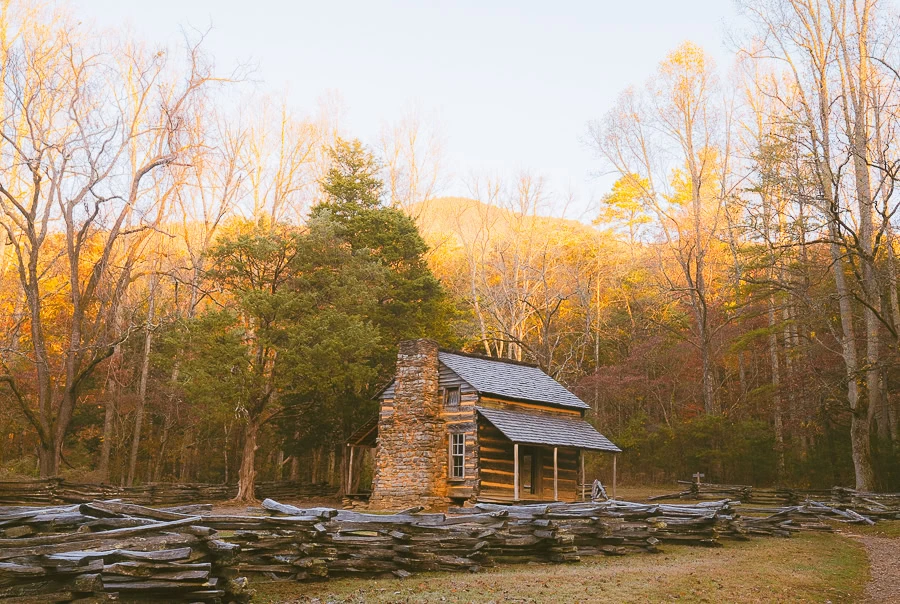
When planning a USA National Park road trip to the Smoky Mountains, three days is the sweet spot. You’ll have plenty of time to explore and enjoy the area’s natural beauty, get in a bunch of activities, and have a heck of an experience.
If you really want to spend more time out and about, taking in everything possible, a 5-day itinerary for the Great Smoky Mountains would be great. But like most national parks, three days is more than enough time for an unforgettable experience.
Where to Stay in the Great Smoky Mountains
There are many accommodations in and around Great Smoky Mountains National Park to choose from. Here’s a quick look at the best hotel and camping options for every price range.
Luxury | Margaritaville Island Hotel
The key to any Great Smokies trip is to find a comfortable location to relax and rewind after a long day of exploring. What better way to do that than in one of the best luxury hotels in Pigeon Forge?
The large rooms here are cozy and adorned with brightly colored paint and stone wall accents. You’ll have access to all the necessities, like a fireplace, TV, microwave, private bathrooms, and spa. Not to mention the in-house restaurant, snack bar, and fitness center.
Margaritaville Island Hotel also has an outdoor pool to relax after a long day out. If all of that wasn’t enough, the hotel is also close to nearby Pigeon Forge attractions, like the Comedy Barn and Country Tonite Theater.>>> Check Availability
Mid-Range | Stonebrook Lodge
Not entirely on a strict budget, but still want to save a little? Stonebrook Lodge in Cherokee, North Carolina, is a great mid-range option that offers excellent value for money. The rooms are cozy and sport that rustic country feel that matches the surrounding area.
Each room is equipped with a refrigerator, TV, ensuite bathroom, a desk, and a hairdryer if you need them. Wi-Fi common areas are scattered across the lodge, too, so you can stay connected. The hotel is only a 2-minute drive from the city center and 3.5 miles from the Great Smoky Mountains National Park entrance.>>> Check Availability
Budget | Creekstone Inn
Nothing beats the sounds of a little river nearby and the sweeping mountain views of the great smokies. That’s what awaits you at Creekstone Inn in Pigeon Forge, Tennessee. This budget-friendly accommodation is the perfect place to kick back and relax after a long day without breaking the bank.
Each spacious room is nicely decorated, colorful, and cozy and offers any amenities you might need. You’ll have access to a microwave, TV, refrigerator, and coffee machine. The views of the Little Pigeon River can be seen from every room, and you can rent an inflatable tube to float along it.>>> Check Availability
Camping in the Great Smoky Mountains
Great Smoky Mountains National Park has four campsites: backcountry, frontcountry, group campgrounds, and horse camps.
- Backcountry camping sites involve long hikes to different campsites, perfect for the more avid fitness gurus or those who like an extended outdoor adventure. These sites require a pass to access and reservations to be made in advance.
- Frontcountry camping sites are more developed and have better amenities, like restrooms, running water, a parking area, and tables for a picnic lunch. There are ten different campgrounds in the Great Smoky Mountains National Park. These sites also require reservations to be made.
- You’ll find that seven group campgrounds in the park are perfect for larger groups or families (seven people or more per group). Each campsite has its own entrance fee (prices range from $30 to $95).
- Horse camps are last up, and the Great Smoky Mountains National Park has five different sites. These have basic amenities, like a fire pit, a parking area, and picnic tables, but have the addition of horse hitch racks. Entrance fees range from $30 to $36.
Read More: Best Places to Stay in the Smoky Mountains | 13 Great Spots
3-Day Itinerary for the Great Smoky Mountains
If this is your first time visiting the Great Smokies, you might be unsure where to start your adventure. This 3-day Great Smoky Mountains National Park itinerary will be packed full of activities and things to do, so without further ado, let’s jump right in.
Day One Great Smoky Mountains Itinerary
Kick off your first day nice and early to catch one of the best national park hikes around. You’ll spend much of your morning hiking the Smoky Mountains, so grab a hearty breakfast before starting the trek.
Hike Mount LeConte and the Alum Cave Trail in the Smoky Mountains
- Mileage: 11 miles (out and back)
- Elevation Gain: 3,016 feet
- Difficulty: Hard
- Trail Guide: Link

Starting your day, try out one of the best hiking trails in the Smoky Mountains. The Alum Cave trail to Mount LeConte isn’t for the faint of heart, but the effort is well worth the reward at the end.
The trail will give you views of iconic landmarks, like the Alum Cave Bluffs trail, Little Duck Hawk Ridge, Myrtle Point, and Mount LeConte. Once you reach the end of the trail, there’s a store at LeConte Lodge where you can purchase a few refreshments after your long hike. If you feel up for it, you can hike to the Cliff Top from the lodge.
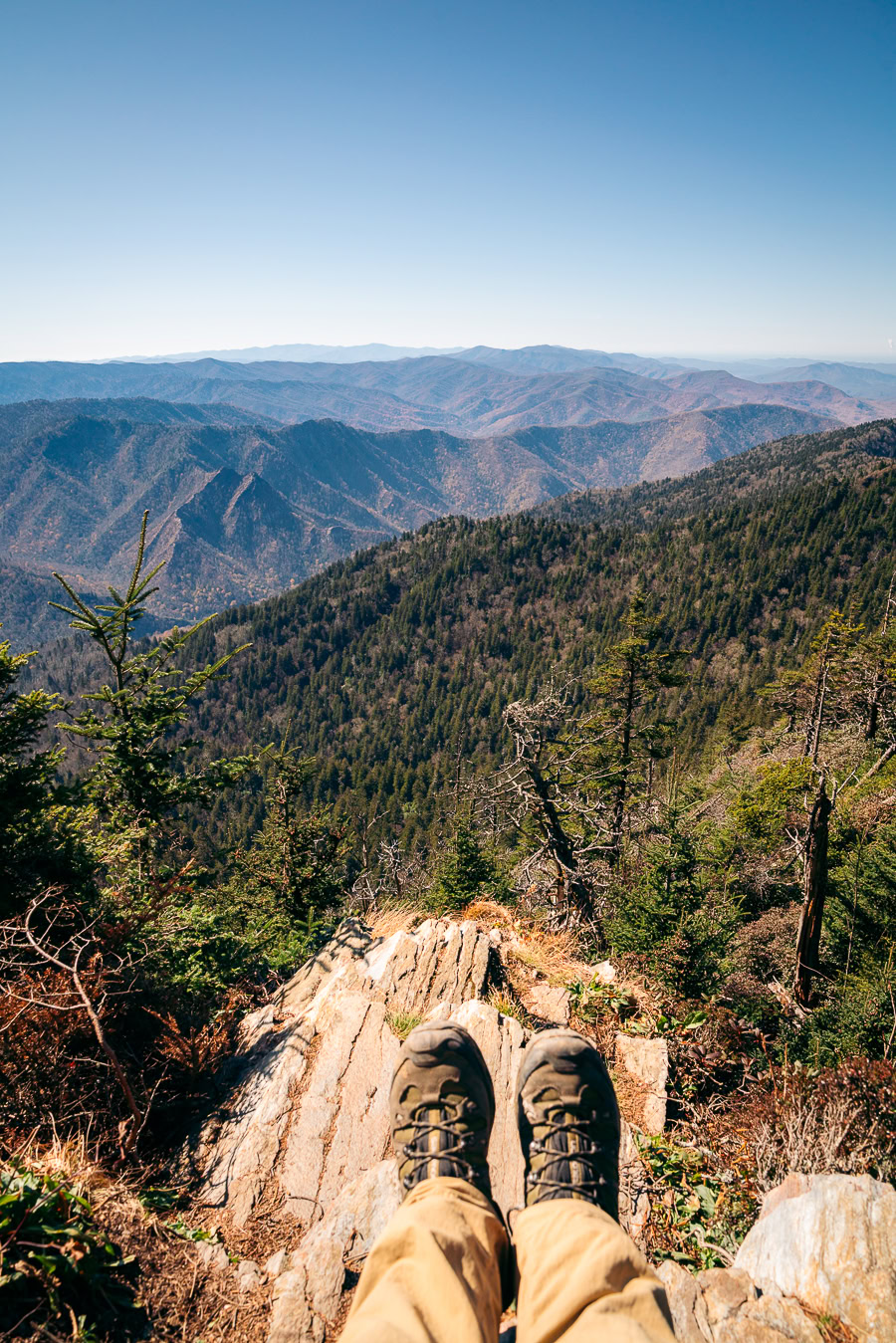
Grab a Bite to Eat at Peddler Steakhouse
Now, you’ll need a big dinner to reward yourself after a long day of exploring. Consider taking a drive about 40 minutes out from Clingman’s Dome to the Peddler Steakhouse in Gatlinburg.
You can keep things simple with a selection of starters, from yummy fried cheese bites to a more classic French onion soup. Of course, there are many cuts of steak, like a New York strip, fillet mignon, rib-eye, and everything in between. You can pair these with any wine of your choosing and finish off with a delectable dessert — maybe tiramisu? It’s up to you.
Watch the Sunset at Clingmans Dome
- Mileage: 1.3 miles (out and back)
- Elevation Gain: 338 feet
- Difficulty: Moderate
- Trail Guide: Link

There’s no better way to end your first day in the Smoky Mountains than to take the 43-minute journey to Clingman’s Dome. This outlook in Bryson City is an iconic spot you need to see, with panoramic views of the mountain peaks and stunning valleys below.
Clingman’s Dome Observation Tower is 6,643 feet above sea level, making it the highest point in the Great Smoky Mountains National Park and the highest point in Tennessee. The dome is accessible from other trailheads, including the Appalachian Trail, which crosses through the dome, and the Forney Ridge Trail.
Grab Your Free Car Camping Checklist! 🚗🌲
Ready to elevate your car camping game? Snag our essential checklist to ensure you’ve got everything you need for a stress-free, fun-filled adventure! Perfect for beginners and seasoned campers alike. Download now and hit the road prepared! 🌟🎒
Day Two Great Smoky Mountains Itinerary
For day two in the Smoky Mountains, you’ll kick off your day with some incredible sunrise views at the infamous Cades Cove, perfect for those memorable shots. Then, you’ll continue on with another active adventure, trying two other Great Smoky Mountain hikes that take you to gorgeous flowing waterfalls.
Watch the Sunrise at Cades Cove
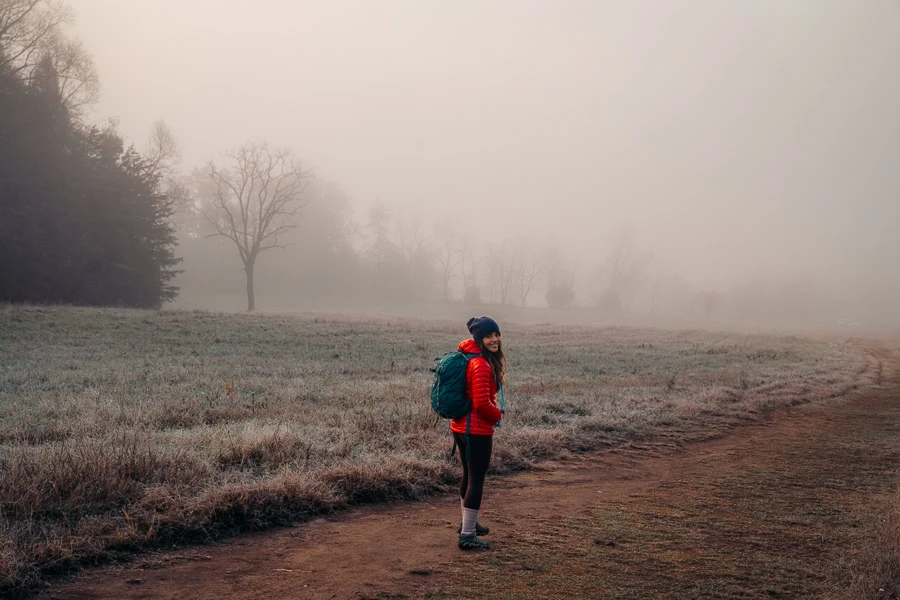
This in the Smoky Mountains will be a whirlwind adventure (and a tiring one), so it’s best to start with something more calming. That’s why you should head to Cades Cove and catch the sunrise’s glorious orange and yellow hues.

Cades Cove has plenty of luscious trees, mountain-surrounded landscapes, and thriving wildlife to capture. White-tailed deer are the most common, but some have spotted raccoons, coyotes, and even black bears — the Cades Cove Visitor Center is great for getting some extra information on wildlife viewing.

Top Tip: If you want to catch the sunrise without traveling early in the morning, try staying in the Cades Cove Campground area overnight — check it out here.
Hike the Abrams Falls Trail
- Mileage: 5 miles (out and back)
- Elevation Gain: 617 feet
- Difficulty: Moderate
- Trail Guide: Link
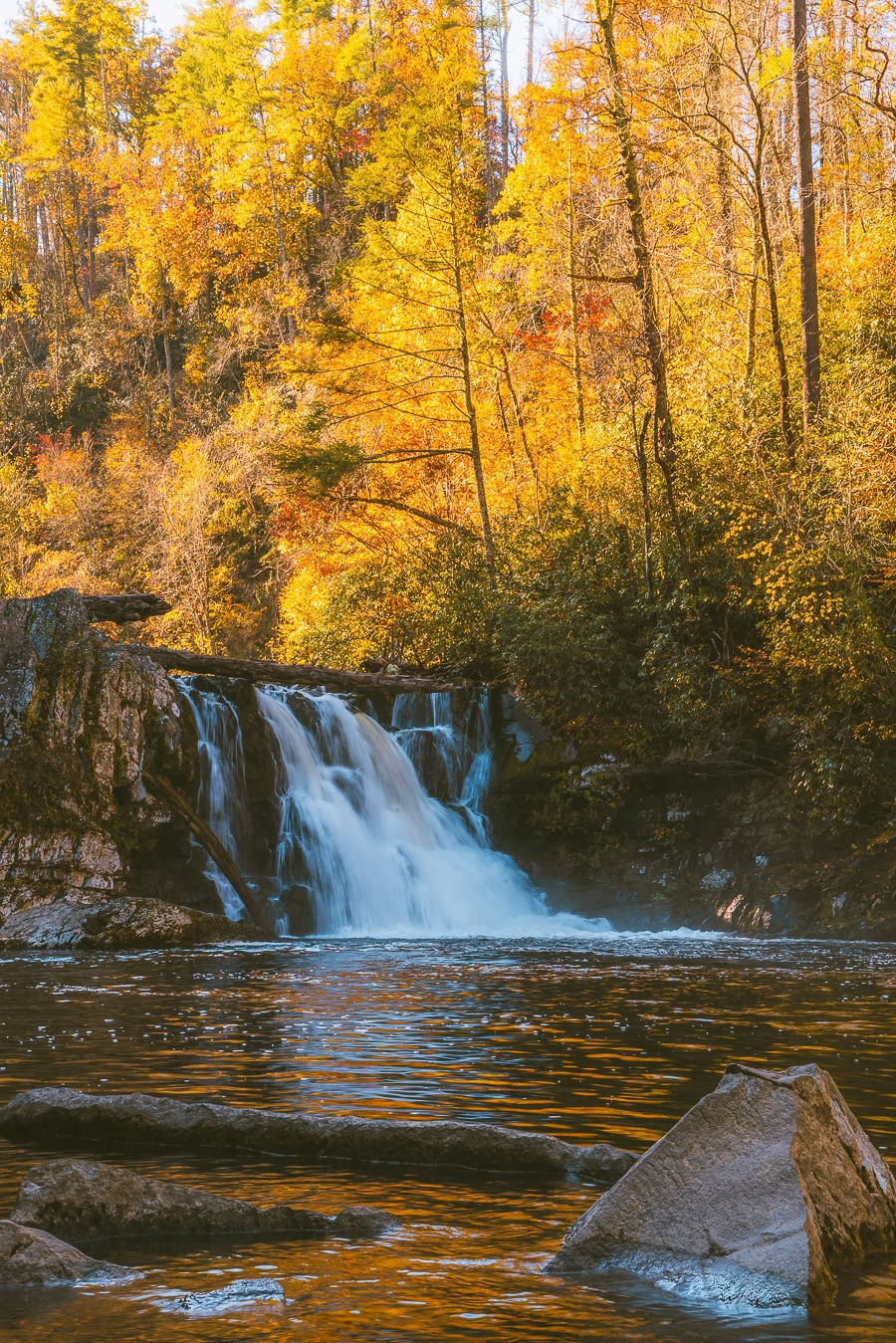
After taking in the breathtaking sunset and scenery at Cades Cove, journey to Abrams Falls on this moderately difficult trail. It’s a nice break compared to the hike on your first day, but it’s still rewarding, and the views are amazing (not that you expected anything less).
The trail is well looked after, so it’s accessible for most people without pesky loose rocks in the way. You’ll walk along forested areas, little creeks, and wooden bridges until you eventually reach Abrams Falls. The flowing falls are great for photos or enjoying the cool air near the bottom of the waterfall’s 25-foot drop, especially after a 2-hour hike.
Hike the Laurel Falls Trail
- Mileage: 2.4 miles (out and back)
- Elevation Gain: 403 feet
- Difficulty: Easy
- Trail Guide: Link

What’s better than one waterfall hike? Well, two waterfall hikes, of course! This hike to Laurel Falls is even easier than the previous one but still boasts those idyllic views that the Great Smoky Mountains National Park is known for.
This trail is usually more populated, particularly on weekends, so keep that in mind. But once you’ve made it along the paved path and reached the end, you’ll be greeted with an impressive waterfall with an 80-foot drop.
The hike should take you just over an hour to complete, so you’ll easily be able to fit it around other activities for the day. Oh, and don’t forget to snap some shots of the wildlife and small critters scattered about.
Grab a Bite to Eat at the Smoky Mountain Brewery
It’s time to reward yourself with some guilt-free American classics — from juicy burgers to ooey-gooey pizzas and crisp beers. The Smoky Mountain Brewery in Gatlinburg is a great way to end your day after breaking a sweat hiking all day.
The menu has everything from Philly cheesesteak sandwiches and nachos to pizza, burgers, and salads (about as healthy as it gets). The restaurant’s highlight is the menu’s local beers, including Cherokee Red Ale, a fantastic Mountain Light brew, and plenty more. Plus, if you’re there on the right night, you could catch a trivia quiz, live music performance, or other events.

Note: There is also a branch of this restaurant in Pigeon Forge.
Day Three Great Smoky Mountains Itinerary
For your third and final day, it’s a good idea to take it easy and relax. Sure, there will still be some walking involved, but the hikes are left behind, and you can simply enjoy the beauty of the mountains.
Try the Gatlinburg Sky Lift and Sky Bridge
One of the best things to do in the Smoky Mountains is to visit the Gatlinburg SkyPark and hop on the SkyLift and SkyBridge.
The journey starts by taking the SkyLift from Gatlinburg up to the peak of Crockett Mountain, which is a staggering 1,800 feet above sea level. The views up here are like nothing you’ve ever seen, with vistas of Great Smoky Mountains National Park spanning as far as the eye can see.
Then, for thrillseekers, try walking across the SkyBridge. At 680 feet long, the bridge spans across the valley below. A glass-bottom floor at the halfway point on the bridge lets you see directly below you (be aware that it’s not for the faint of heart). This experience is truly unbeatable.
Marvel at Grotto Falls via the Trillium Gap Trail
- Mileage: 2.6 miles (out and back)
- Elevation Gain: 545 feet
- Difficulty: Moderate
- Trail Guide: Link
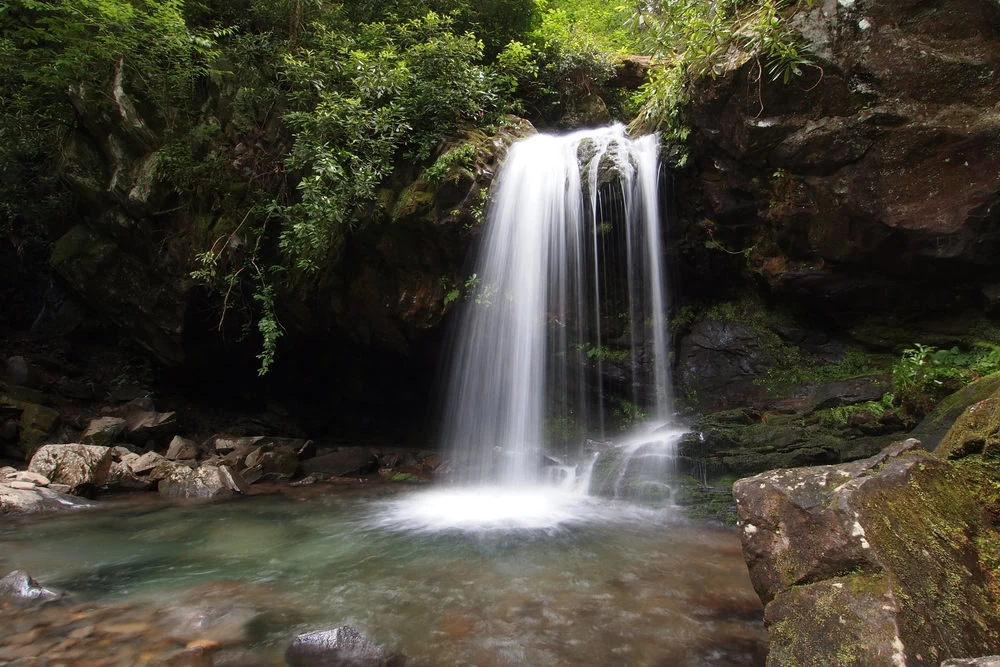
You didn’t think you’d seen the last of the waterfalls, did you? As a final hiking adventure, you just have to take the 1-hour-20-minute trek to Grotto Falls. It starts at the Trillium Gap Trailhead and takes you through shaded, forested areas, passing little river streams and plenty of small critters.
Trying this trail during spring is extra special, with plentiful and colorful wildflowers blooming all along the path. While the falls aren’t all that imposing, the atmosphere is perfect for a warm day and enjoying nature. Plus, it’s an ideal place for a small family picnic.
Download my free Outdoor Photography Guide
Drive Along the Blue Ridge Parkway
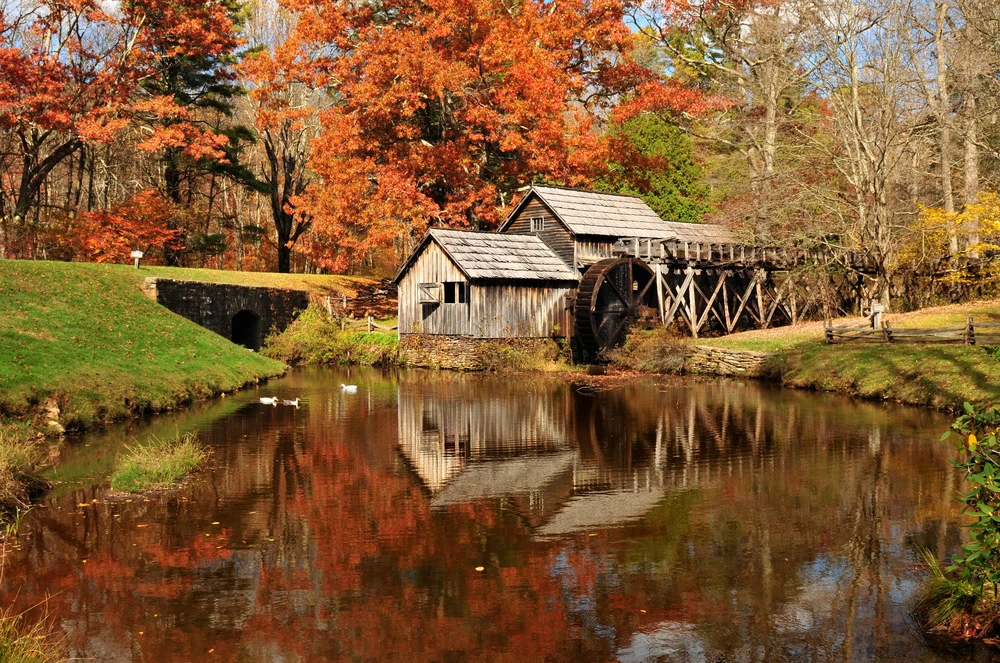
For a beautiful end to an unforgettable trip, you can’t go wrong with driving along the Blue Ridge Parkway. This scenic road spans 469 miles from the Smoky Mountains National Park to Shenandoah National Park and boasts picturesque natural scenery along the way.
You don’t have to drive the entire route, but even a few short miles along this parkway is worth the trip. At the end of the day, it isn’t called “America’s Favorite Drive” for nothing.
FAQs About Planning a Vacation in the Smoky Mountains
No vacation in the Smoky Mountains is without its challenges, so it’s understandable if you still have some questions that need answering. Here are some of the most frequently asked questions to set your mind at ease.
Where Is the Most Photographed Place in the Smoky Mountains?
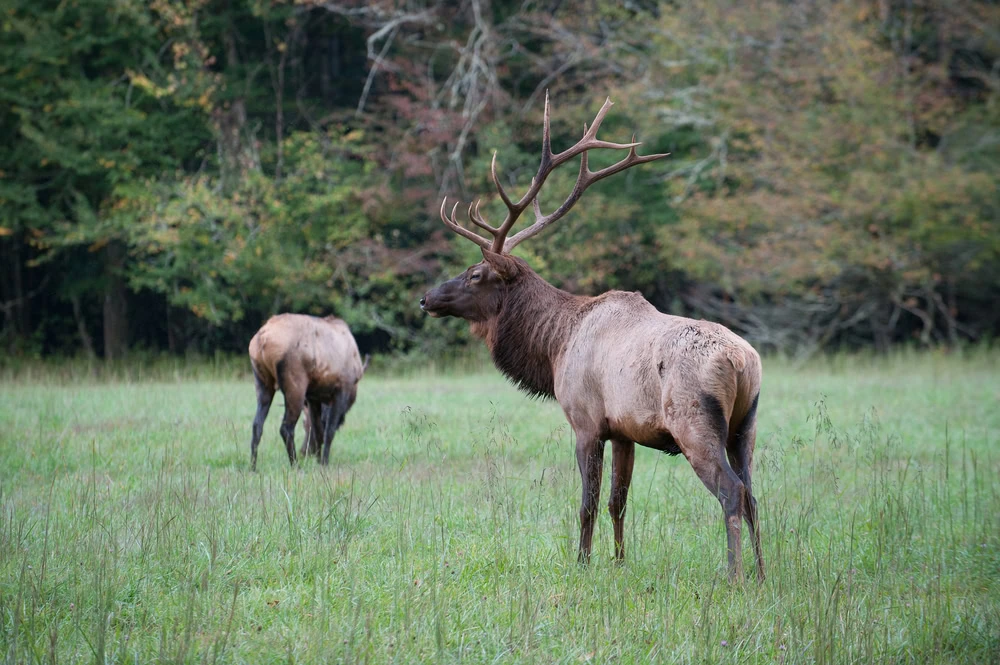
The most photographed place in the Smoky Mountains is Cades Cove. The wildlife is unmatched, and the scenery is gorgeous, so you can take your photo skills to the next level. Springtime is the best time to take photos since the wildflowers are in bloom and look gorgeous.
The next best photography locations are Tremont, Roaring Fork, Newfound Gap Road, and Clingman’s Dome, just to name a few.

Top Tip: Here are some helpful hiking photography tips for your next visit to Cades Cove.
What Is the Most Scenic Route Through the Smoky Mountains?
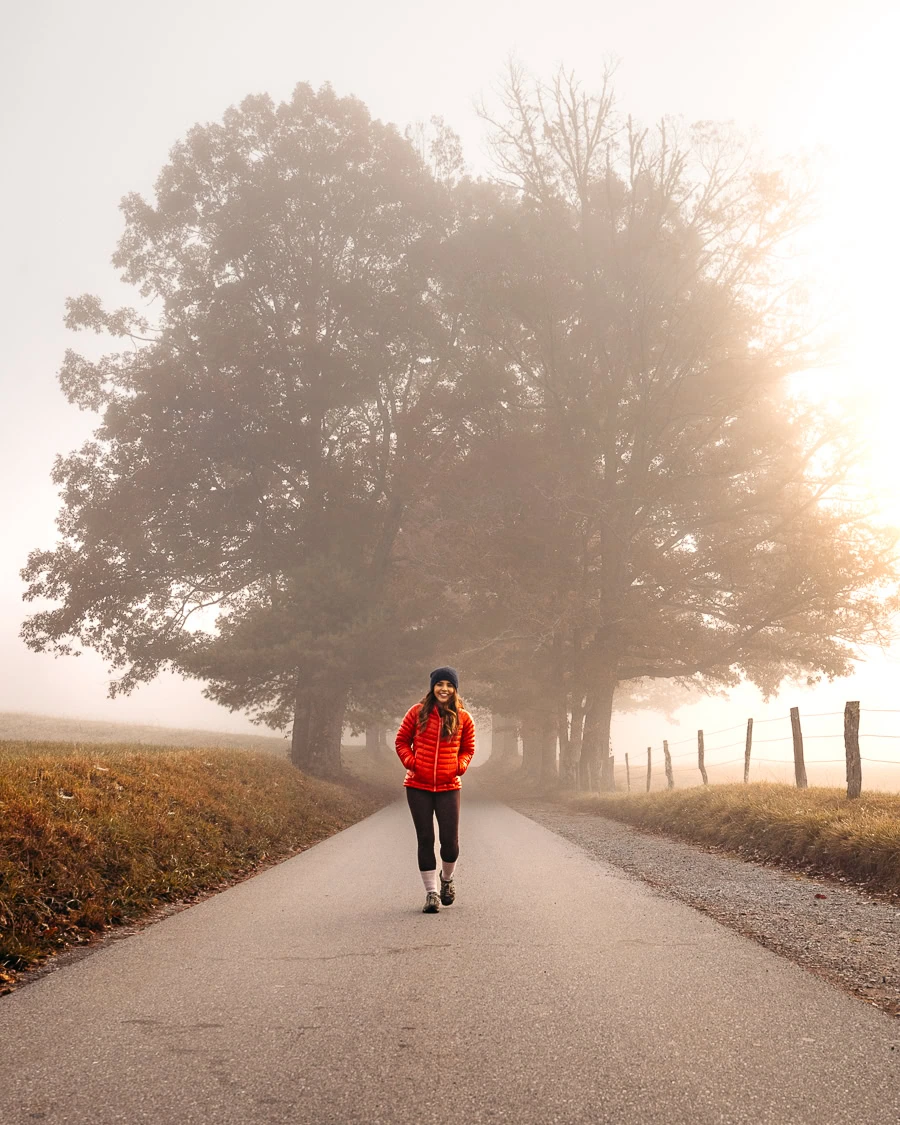
One of the best scenic drives you can try is the one along Newfound Gap Road or the US-411 highway. It connects Gatlinburg to Cherokee and has a total length of 32 miles. Due to the high elevation, the views are unbeatable and look down into the lush forests in the valley below. It’s recommended to stop at some of the Newfound Gap outlooks perched along the way to fully take in the scenery.
Apart from Newfound Gap Road, Cades Cove Loop Road is a close second, boasting incredible views of the Appalachian mountains and surrounding grassy hills. The road is a ±11-mile loop through the Smoky Mountains, with plenty of spots to stop and snap a few photos.
Whatever road you decide on will be well worth the road trip.
Where Is the Best Place to Enter the Smoky Mountains?
The best place to enter the Great Smoky Mountains National Park depends on which state you’re traveling to or from.
It’s best to use one of the two main entrances: the Sugarlands Visitors Center entrance near Gatlinburg and Pigeon Forge in Tennessee and the Oconaluftee Visitor Center entrance near Cherokee in North Carolina.
What To Pack For the Great Smoky Mountains
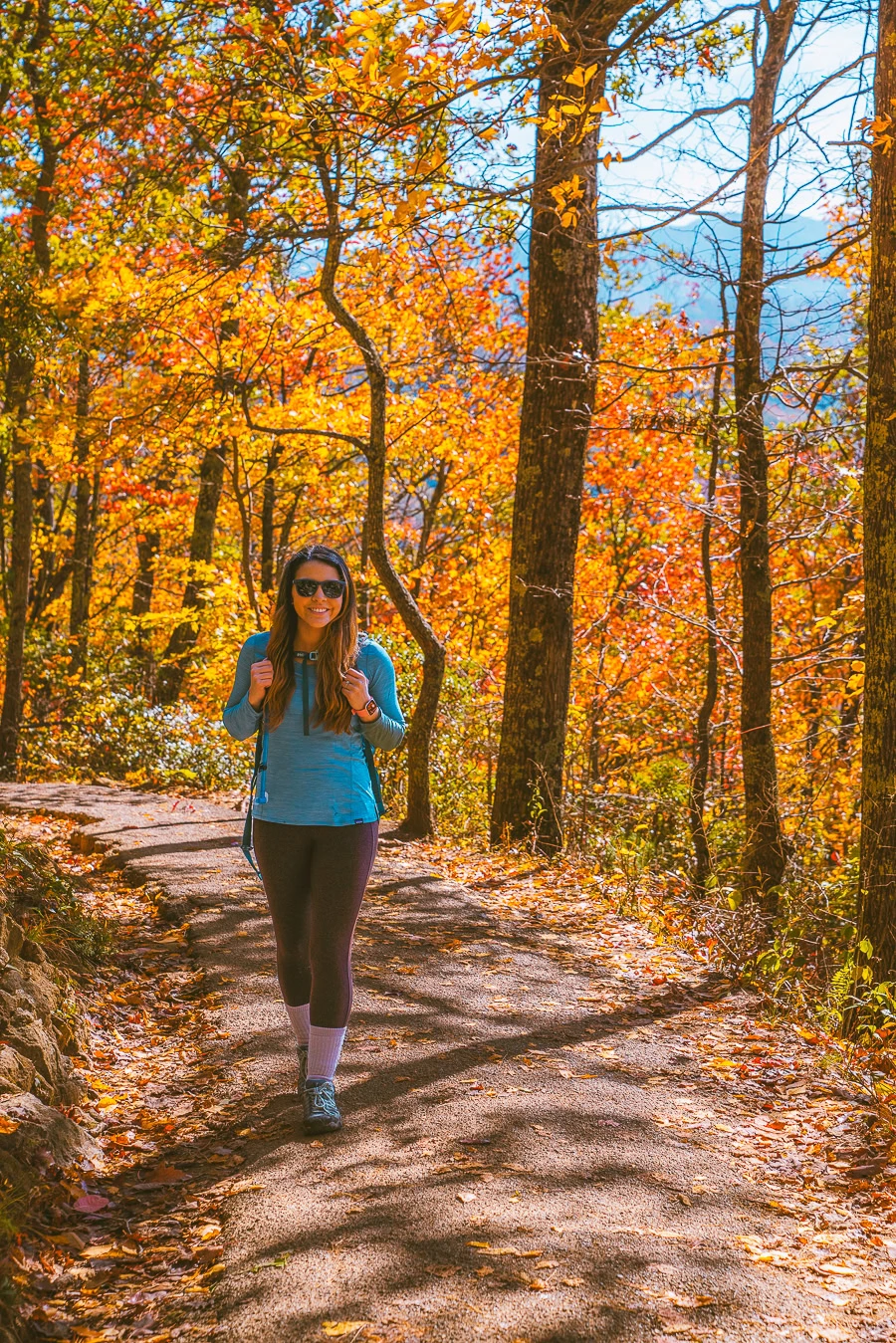
- Sunscreen: One of the ten hiking essentials, so make sure to pack this for safety. >Buy Sunscreen
- Hiking Boots/Shoes: If you use tennis shoes, you can easily hurt your toes hitting a rock by accident (Trust me, I have done it so many times before). >Check Out My Hiking Shoes
- Hiking socks: Having the correct socks helps you prevent getting blisters. Smart Wool is probably my favorite brand out there. >Buy Hiking Socks
- Water Reservoir: Water reservoirs help prevent me from getting dehydrated while hiking. The great thing about this reservoir is that it doesn’t have the plastic taste. >Here Is My Water Reservoir
- Water: Stay nice and hydrated.
- Sunglasses: It can get sunny, so make sure to pack some sunglasses. >Check Out These Sunglasses
- Snacks: The best snacks are jerky, nuts, energy bars. Clif Bars are great for hiking.
- Camera: The Sony A6000 was one of the first cameras I started traveling with. The Sony A6000 is an excellent camera for people who want to start improving at travel photography. >Buy Sony Camera Here
- First Aid Kit: This is one of the first things I bought when I started going on adventures. It is super portable. >Buy This Awesome First Aid Kit Here
- Day Pack to carry all your things: The REI bag I have linked, we have had for seven years now, and it is still going strong! >Buy This Great Quality Backpack
- Headlamp: A headlamp is an absolute must in case you get stranded in the dark! It is a lot more portable and easier to use than a flashlight. >Buy A Headlamp Now
- Leggings or Hiking Pants: I always wear leggings while hiking because I feel most comfortable with it! >Click For My Favorite Hiking Leggings
- Breathable sweat-wicking shirts: Cotton shirts soak up your sweat when hiking, so wear something breathable. >Check out this awesome breathable shirt here.
- Sweater: I wore this in the fall when the hikes were very easy and it was a little chilly. >Check Out My Sweater Here
- Sports Bra: For women.
- Jacket: In case you get chilly at night. This is also a good idea in the Spring and Fall. >Buy My Favorite Jacket
- Tripod: This is an optional item, but it is excellent for getting the ideal sunset pictures. >Check out this tripod
- Knife: I always carry a knife in my backpack just in case. >Check Out My Knife Here
- National Park Pass: I highly recommend getting a year-long America The Beautiful Pass. >Get It Here
- Map: I love the National Geographic Maps! They are the best! >Buy One Here
Claim your FREE Hiking Checklist
Ready to start hiking? Grab my free hiking checklist and never forget anything at home!
Wrapping Up Your 3-Day Great Smoky Mountains Itinerary

So, there you have it — the perfect 3-day Smoky Mountains Itinerary for North Carolina and Tennessee’s most visited national park. Whether taking a short hike to Grotto Falls, eating at local restaurants in Pigeon Forge, or visiting Clingman’s Dome, you’ll never waste a second of your time here.
But now that you’re all clued up, you can get ready to visit the most visited national park in North Carolina and Tennessee and embark on your adventure in the Great Smokies. And if you’re still feeling like an extra adventure at some other national parks, why not take a look at a Death Valley itinerary?

